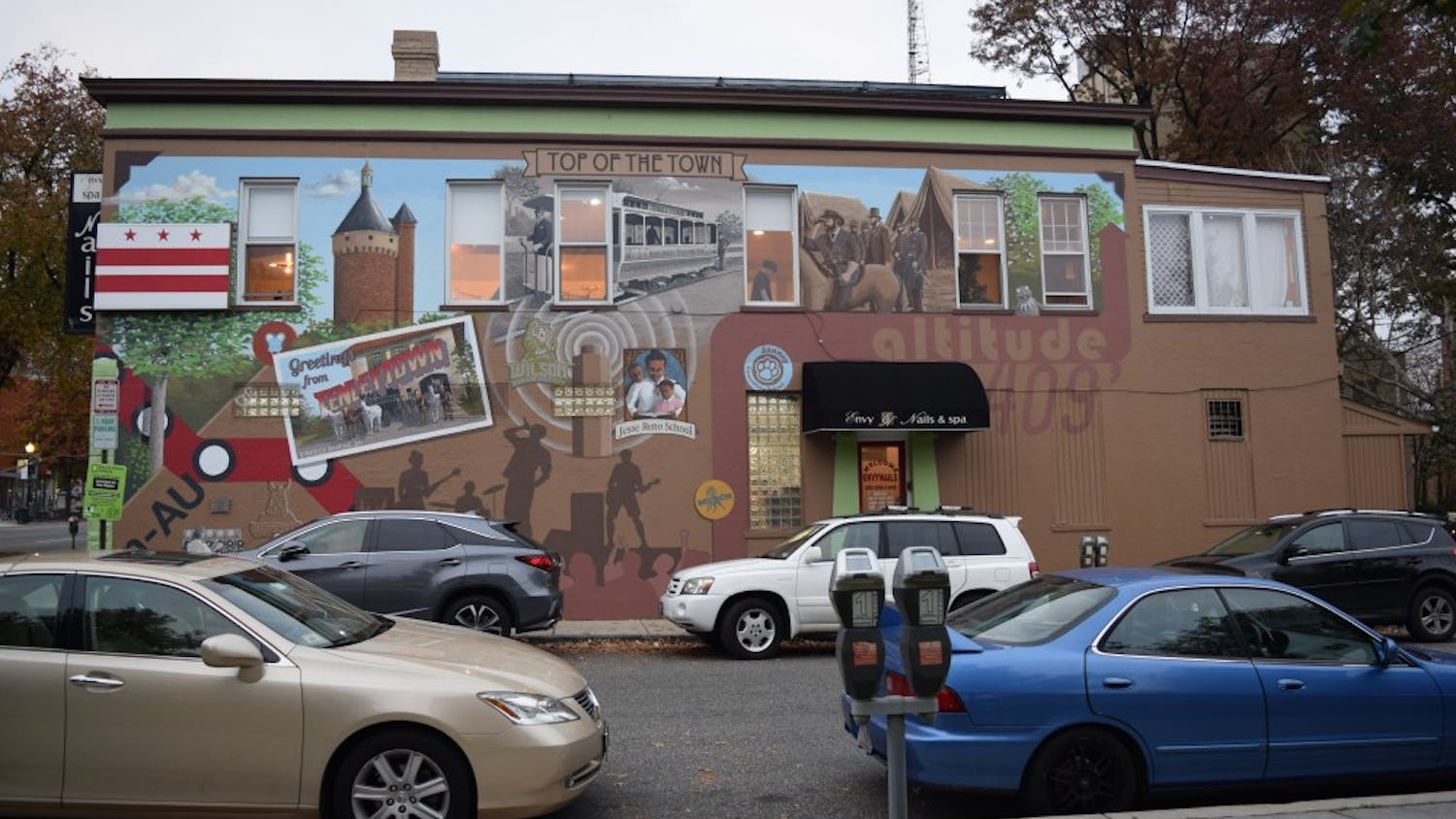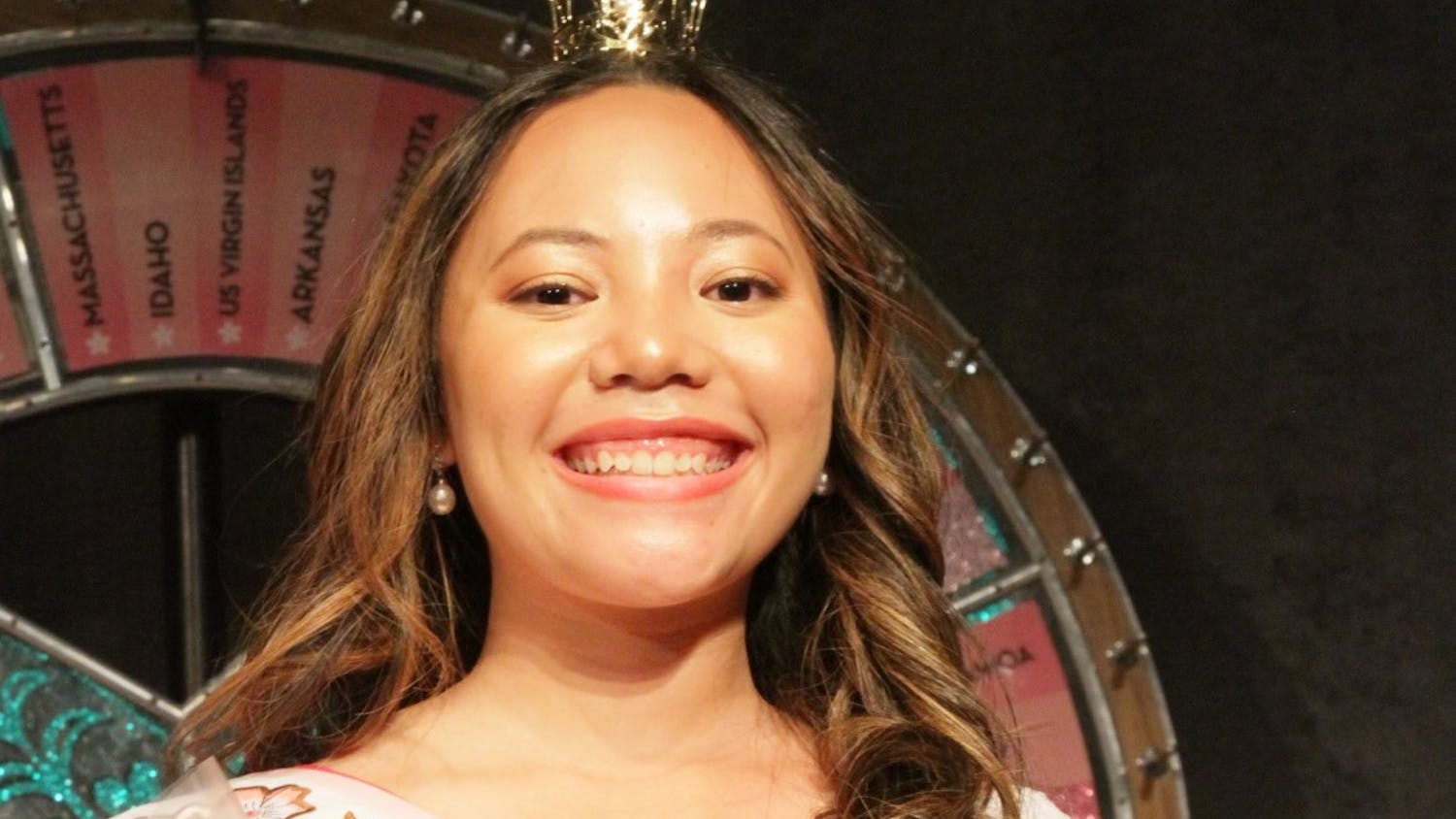Conservationist and photographer Cristina Goettsch Mittermeier, 37, remembers when she took the photo entitled "Breastfeeding" - the picture of a Cuban woman breastfeeding a small animal called a hutia.
She recalls when she and two other conservationists were in the rural area of the Zapata region outside of Havana, Cuba, in 1999, when they came upon a town. The townspeople became excited, wanting their pictures taken and giving tours around their houses, when Mittermeier met the woman.
The woman began talking to her, Mittermeier said. She was introduced to her one-and-a-half-year-old son as well as her two pet hutias, a small mammal native to Cuba. As she spoke to the woman, the woman proudly allowed the smaller of the two pets to crawl up her leg onto her chest and breastfeed itself.
The picture that Mittermeier uses for lectures is one out of many that have become representative of one of the scariest problems in the Third World, which shows how the close contact between humans and wild mammals can lead to an exchange of diseases between them.
But the photo, part of an exhibit to highlight the Center for Social Media's upcoming Environmental Film Festival, was taken down by Mittermeier after a small controversy stirred in AU's School of Communication.
Complaints were made by some members of the AU community who were offended by the picture and thought that the photo was disgusting and demeaning to Latin American women.
"The intention was not to shock people, offend women or to talk about breastfeeding," Mittermeier said. "I understand how this might be shocking for some people, but breastfeeding domestic animals is not unusual in other parts of the world."
Mittermeier said that the woman wanted her to take the picture and was proud to be photographed, which is seen in the photo.
"If this picture was shown in the National Geographic, nobody would have thought anything about it, because National Geographic makes a point of showing you parts of the world that you don't normally see," Mittermeier said. "It would be a disservice to photographers and journalists if we had to go out there thinking, 'Who am I going to offend with these pictures?' By taking down the photo, we've lost the opportunity to talk about the issue."
In fact, this wasn't the first time she has seen women breastfeeding animals. When she was in Papua New Guinea, she saw that women were breastfeeding piglets, sometimes two a time, one on each breast, she said.
Mittermeier was asked to exhibit her photos after longtime photography professor Libby Cullen met her in an art workshop in Virginia.
Cullen has no problem with the picture, but does understand AU's negative response.
"Unlike public spaces, i.e. museums, in which it would be considered censorship, AU is a private institution and employees should not be subjected to imagery that they might find highly offensive," Cullen said. "One of the angles is the close interaction between humans and other species in our diminishing environment, and that is one of the areas that Cristina is focusing on as represented in the picture of the 'Woman with Goose,'" Cullen said of another picture that Mittermeier took in China of a woman with her pet goose on her head to show the relationship between SARS and the avian virus.
Mittermeier said that in China, because there is a tradition of eating wild animals like civets, a virus can easily be passed from the wild animals to chickens and pigs if they are kept in the same places. The virus can then easily jump to humans and start an epidemic like the one that developed last year. She says that this is the same with Ebola and AIDS in Africa. Wild animals should not be captured for food or pets because they harbor many viruses new to humans.
Runs in her blood
Mittermeier, who speaks four languages and has been to 40 countries, currently lives in Great Falls, Va., with three children and her husband, Russell, who is the president of Conservation International. The organization, where she is a biodiversity consultant, is dedicated to conserving Earth's living natural heritage, global diversity and demonstrating that human societies are can live harmoniously together.
Although she didn't realize her love for photography until later in life, she has always been concerned about conservation and the environment since she was a girl growing up in the '70s in the Mexican city of Cuernavaca. She was confronted by the age of the population boom and the idea that there would be not enough resources to feed people.
In college, she studied biochemical engineering with a focus on marine biology and fisheries. She remembers her first time on a fishing boat that was trawling shrimp.
"They dragged these enormous chains on the bottom of the ocean, racing down the ocean floor and destroying everything. The nets would come up and where one would expect to see shrimp, instead you get rocks, dead fish and even sea turtles," Mittermeier said.
"For every pound of shrimp, you get 10 pounds of 'bycatch' species. An enormous waste. It is like trying to catch squirrels with a bulldozer."
After that she made the decision to work on conservation and began studying in the Yucatan Peninsula and the Gulf of California.
A resort had hired her for six months to do an inventory of species when a group of scientists from Conversation International met her. She was hired on the spot to work for its projects in Mexico. A year later, she met her husband at an airport in Mexico. Three months later, the two were married.
Since then, Mittermeier has traveled around the world, co-authoring several books and scientific papers and taking pictures with other scientists to highlight Conservation International's strategies.
One of the places that Conservation International has had a profound effect is Suriname, a place that Mittermeier has visited on several occasions and remembers fondly.
She even speaks the nation's Pidgin-English language, Sranan Tongo.
Suriname, a country in South America, has one of the largest untouched rainforests in the world, Mittermeier said. The organization helped to conserve a large piece of land that was going to be logged by a Malaysian company that offered money to the cash-strapped country.
However, the group of scientists involved convinced the government that expenses and social problems would produce more costs than benefits if it agreed to do business with the logging company.
Instead of logging its rainforest, the government of Suriname created a 1.6 million hectares of protected area.
Everyone's concern
"Young people in urban areas do not feel a passionate connection with nature," Mittermeier said. "They do not realize that the survival of our environment is critical to our own survival as a species."
She said people need to be aware and question those people who are making money by exploiting the natural resources of different countries, which, in reality, belong to all of us.
One of the examples she talks about is the contrast between Cuba and Haiti.
Mittermeier said that a satellite image of Haiti and the Dominican Republic will show that while the Dominican Republic has forests and coral reefs around it, Haiti is completely devastated.
"What happened to Haiti is that they have lost all their bargaining chips," Mittermeier said. "Nobody wants to invest, there's no tourism ... and it's the poorest country in the Western Hemisphere. Natural resources have a very positive economic benefit to countries and environmental degradation breeds poverty, desperation and political instability."
In comparison, Cuba is a very different story. Since Cuba doesn't have the tools to "develop" because there is no foreign aid, it has not devastated its forest or the resources, and its natural surroundings are protected, Mittermeier said, who added that Cuba has one of the most pristine coral reefs left in the Caribbean.
"Now it's a little too late for Haiti, but for Cuba, when and if they open their borders, they will be in a great position to attract tourism and industry," Mittermeier said.
"People in Cuba are poor but they are not starving and there is great hope for their future if they use their resources wisely."
Mittermeier encourages students to attend environmental film festivals like the one at the University and get involved with environment issues like the ones she is passionate about.
"As consumers and voters we have the power to make decisions that will change the way our environment is being exploited," Mittermeier said.




